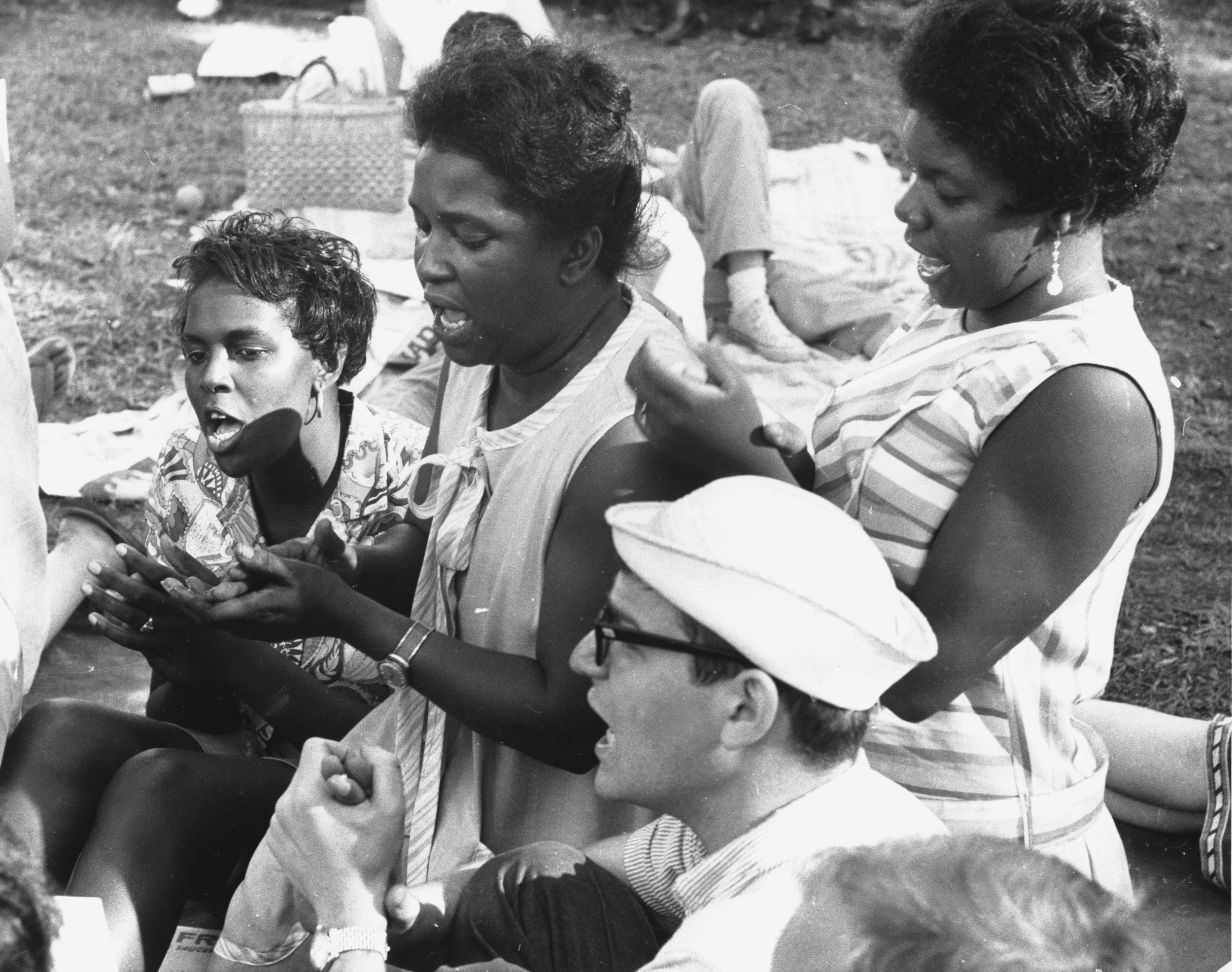Key Narratives for Teaching About the Civil Rights Movement
Reading by Deborah Menkart and Judy Richardson
Volunteers and locals mark the start of Freedom Summer in Hattiesburg, Mississippi, on July 4, 1964 with a fish fry at the estate of local civil rights leader Vernon Dahmer. Hattiesburg residents Marie Blalock (center) and Johnnie Pearl Watts (right of Blalock) and volunteer Bob “Soda Pop” Ehrenreich (foreground) join in song. Herbert Randall Freedom Summer Photographs, Mccain Library and Archives, University of Southern Mississippi.
What should young people learn about the history of the Civil Rights Movement? That was the question that led us to develop this list of key narratives about the Civil Rights Movement that can serve as a rubric for assessing curricula or textbooks.
The initial narratives were drawn from an article by Judy Richardson about teaching Eyes on the Prize. We added concepts from a talk by Charles Cobb Jr., the introduction to Putting the Movement Back Into Civil Rights Teaching, and from teachers in institutes hosted by Teaching for Change and the SNCC Legacy Project.
We invite readers of this document to add to and adapt the list.
Key Narratives About the Civil Rights Movement
The Civil Rights Movement was a primary force for the expansion of democracy for all.
The Movement was based on the work of thousands of local “ordinary” people who both organized and sustained it.
The Movement thrust forward its leaders, not the other way around.
The Movement was not simply a series of spontaneous demonstrations — it was often carefully planned and executed.
Women and youth were a fundamental part of the leadership and the troops of the Movement.
The tradition of protest grew out of a long history of activism and resistance in the Black community.
The Freedom Struggle had many demands, including an end to state-sponsored and -condoned violence, voting rights, access to health care, education, housing, land rights, environmental justice, peace (antiwar), labor rights, recreation, and more. Quality education has always been a primary focus of the Freedom Movement for African Americans.
The tactics of the Movement included economic boycotts, protests, grassroots organizing, economic co-ops, building organizational alliances, self-defense, nonviolence (both tactical and philosophical), freedom schools, popular education, and more.
State-sponsored and/or -condoned violence, including sexual violence against African Americans, was frequent, random, and carried out with impunity.
Most people in the United States were not part of the Movement.
Music played a major role in strengthening and unifying the Movement.
Oppression and resistance existed in both the South and the North.
Even the smallest acts of solidarity by white people with African Americans were nipped in the bud with swift and harsh punishment.
The Movement was based on humane values that brought out the best in each individual involved.
The Movement emphasized responsibility to one another.
With few exceptions, the commercial white press in the South (and to some extent in the North) played an active role in promoting white supremacy through lies, omissions, and exposing activists, while the Black press played a key role in supporting the Movement.
A diverse group of national and international participants was involved in the Movement.

